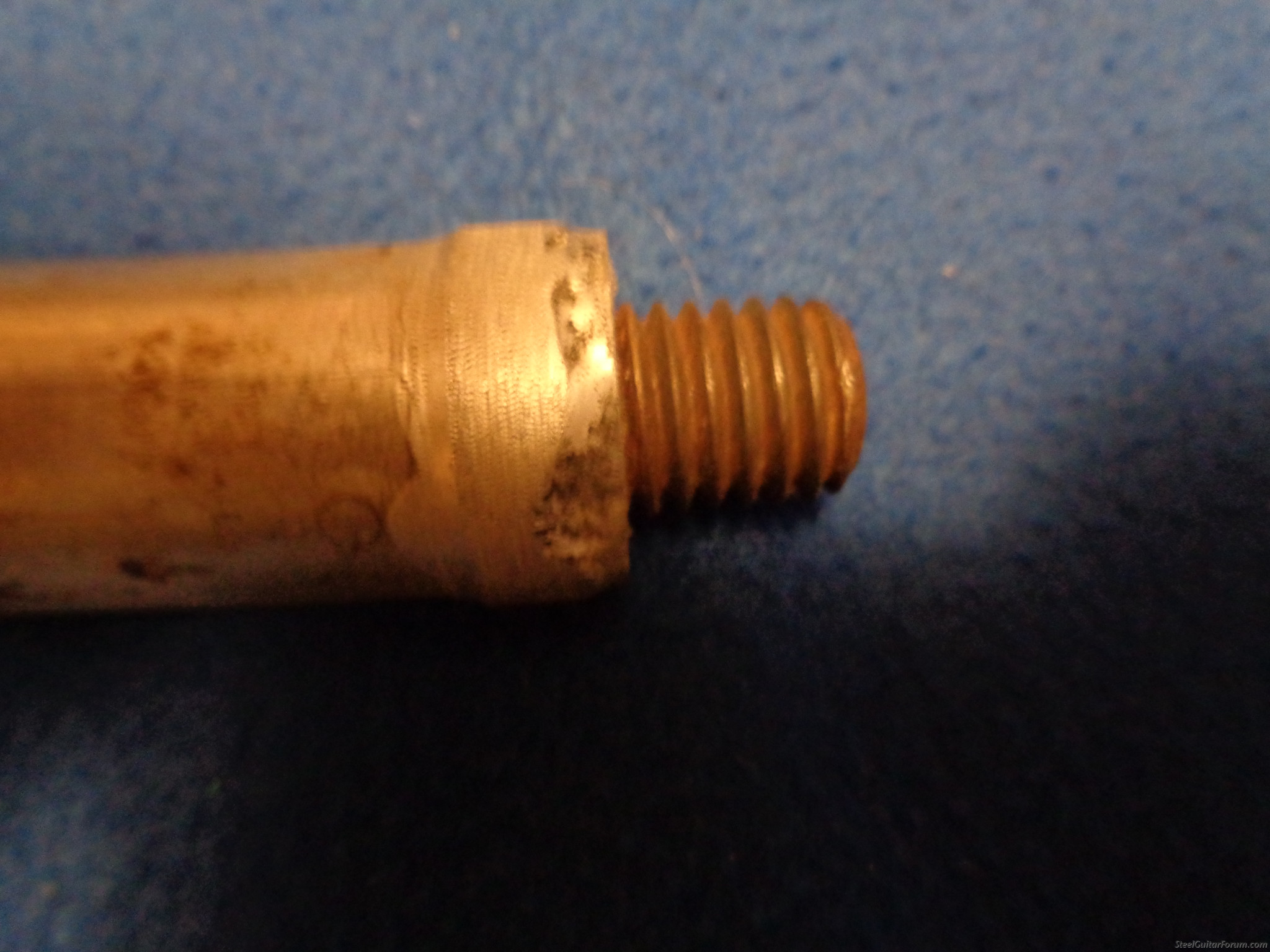| Author |
Topic: Making legs |
Brian Henry
|
 Posted 28 Jan 2025 4:37 pm
Posted 28 Jan 2025 4:37 pm |
|
I am in the process of making aluminum legs for the EMCI.
_________________
LOOKOUT MOUNTAIN GEORGIA
Last edited by Brian Henry on 2 Feb 2025 11:52 am; edited 1 time in total |
|
|
|
Jeremy JT Young
From:
Loretto Tennessee, USA
|
 Posted 28 Jan 2025 5:09 pm Knurled clutches
Posted 28 Jan 2025 5:09 pm Knurled clutches |
|
Brian thise Knurled clutches are available for purchase from atlas stands. But they are pretty pricey. I'm working on creating a 3D printed version of them. The threads are turning to be tricky lol
_________________
JT Young, Living the Dream. Smile, make a positive impact on someone else's life today ! 😊 |
|
|
|
George Piburn
From:
The Land of Enchantment New Mexico
|
 Posted 29 Jan 2025 5:56 pm Threads
Posted 29 Jan 2025 5:56 pm Threads |
|
A precision machinist supply will have speciality tools to find thread counts for you, they will also sell the tap and die for it too.
If memory serves , 27 per inch on those 7/8 tubes.
Obviously you need to take the parts you want to mimic with for measuring.
On 3D prints we clear the threads with a normal tap by hand real quick
Our fusion expert has 3D printed receiving threads from 6-32 up but can go whatever count and diameter cut depth and so on is called for.
_________________
GeorgeBoards S8 Non Pedal Steel Guitar Instruments
Maker of One of a Kind Works of Art that play music too.
Instructional DVDs
YouTube Channel |
|
|
|
Ian Worley
From:
Sacramento, CA
|
 Posted 29 Jan 2025 7:23 pm
Posted 29 Jan 2025 7:23 pm |
|
George is correct, the standard Atlas-type steel clutches are 7/8-27 thread. The problem you will have with threads that fine on aluminum is durability. There were a couple of folks making aluminum legs in years past that used a much coarser thread pitch, 7/8-14, to avoid problems with cross-threading and stripping. Those threads were also chrome plated, which alleviates the other issue you'll face with bare aluminum, galling and seizing of the threads. Forumite Wayne Brown has been working on some options for producing new aluminum legs, look for his post in New Product Announcements, he may be able to help you out.
BTW, the smaller tubes on standard Atlas-type legs and mic stands are 5/8", not 1/2" as you mentioned in your OP.
_________________
All lies and jest, still a man hears what he wants to hear and disregards the rest - Paul Simon |
|
|
|
Brian Henry
|
 Posted 30 Jan 2025 4:51 pm
Posted 30 Jan 2025 4:51 pm |
|
Thank you George and Ian you have been very helpful. I have the 7/8” tubes and the 1/2” 13 TPI already installed at the top. I just need to cut these 7/8” 27 TPI threads. I’m not in the leg making business, I just need a set for my EMCI. My set will cost me about $25 each. They are not that hard to make really . Two years is way too long. Mine has taken me two months and close to finishing.
_________________
LOOKOUT MOUNTAIN GEORGIA |
|
|
|
Jeremy JT Young
From:
Loretto Tennessee, USA
|
 Posted 30 Jan 2025 5:05 pm Aluminum legs
Posted 30 Jan 2025 5:05 pm Aluminum legs |
|
Yes We have ran into all those issues and abandon the standard screw 7/8 clutch for now due to the issues with aluminum and threads nit being a good marriage. We designed a different system as fir aluminum legs that uses a 1/4 20 allenhead to t8ghten them. Still much lighter than standard legs I designed a wrench to go with them lol. Works for me.....
_________________
JT Young, Living the Dream. Smile, make a positive impact on someone else's life today ! 😊 |
|
|
|
Rich Cottle
From:
Sacramento California
|
|
|
|
Brian Henry
|
|
|
|
Bobby D. Jones
From:
West Virginia, USA
|
 Posted 5 Feb 2025 1:03 am
Posted 5 Feb 2025 1:03 am |
|
Adjustments on the front legs are not of much use, Once the front height of the guitar is set, For the player.
You can get by with 1 adjustable leg on the back, To level up on a uneven areas.
The aluminum legs used on some guitars are just Aluminum/Chromed tubing. GFI legs are .875 7/8" aluminum chromed tubing with threads in both ends. In the front legs there is a aluminum .625" 5/8" piece that the pedal board engages, With rubber foot. This gives a 1/8" shoulder for a pedal bar upward stop.
The rear legs are threaded bottom with .625 5/8"
and put a plastic stub or metal set screw in the bottom.
with knurled lock nut and rubber foot.
When I built a pedal steel in 1970 I put aluminum bushings in the the top of aluminum legs, Threaded 1/2-13 to attach to guitar. Wish I had put Bushings in the bottom of the 2 back legs, So they could be adjusted.
 |
|
|
|
Tim Toberer
From:
Nebraska, USA
|
 Posted 5 Feb 2025 6:21 am
Posted 5 Feb 2025 6:21 am |
|
I made my legs from this video. They work and are super cheap and easy to build. I run them on the lathe and buff them with a very fine scotch pad. I was looking at the aluminum conduit on McMaster and thinking this would work somehow. Aluminum would be nice, I just don't care enough about having chrome shiny legs to worry about plating I guess. Maybe if I get all the other issues with my guitar worked out I would consider it. lol |
|
|
|



